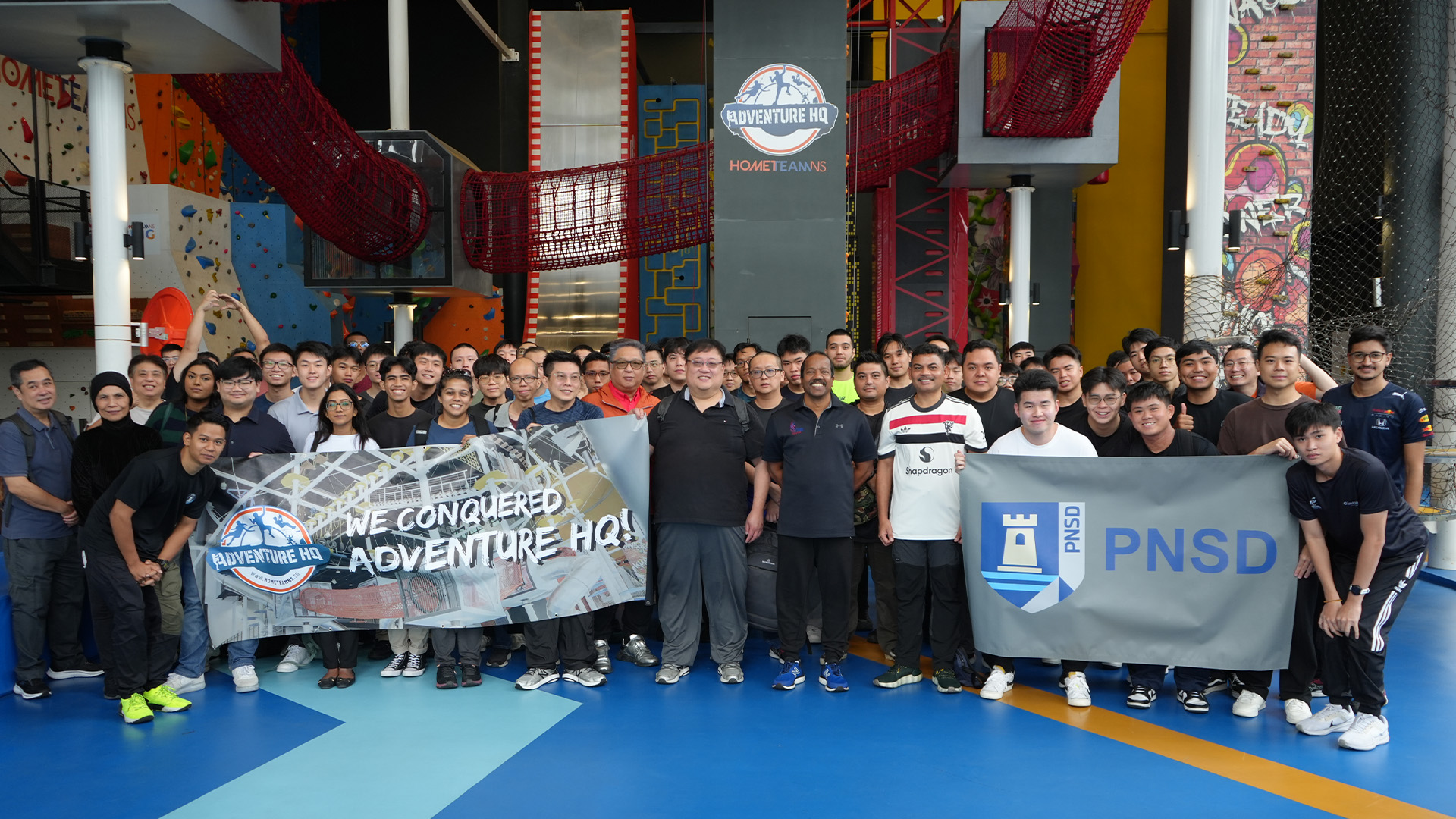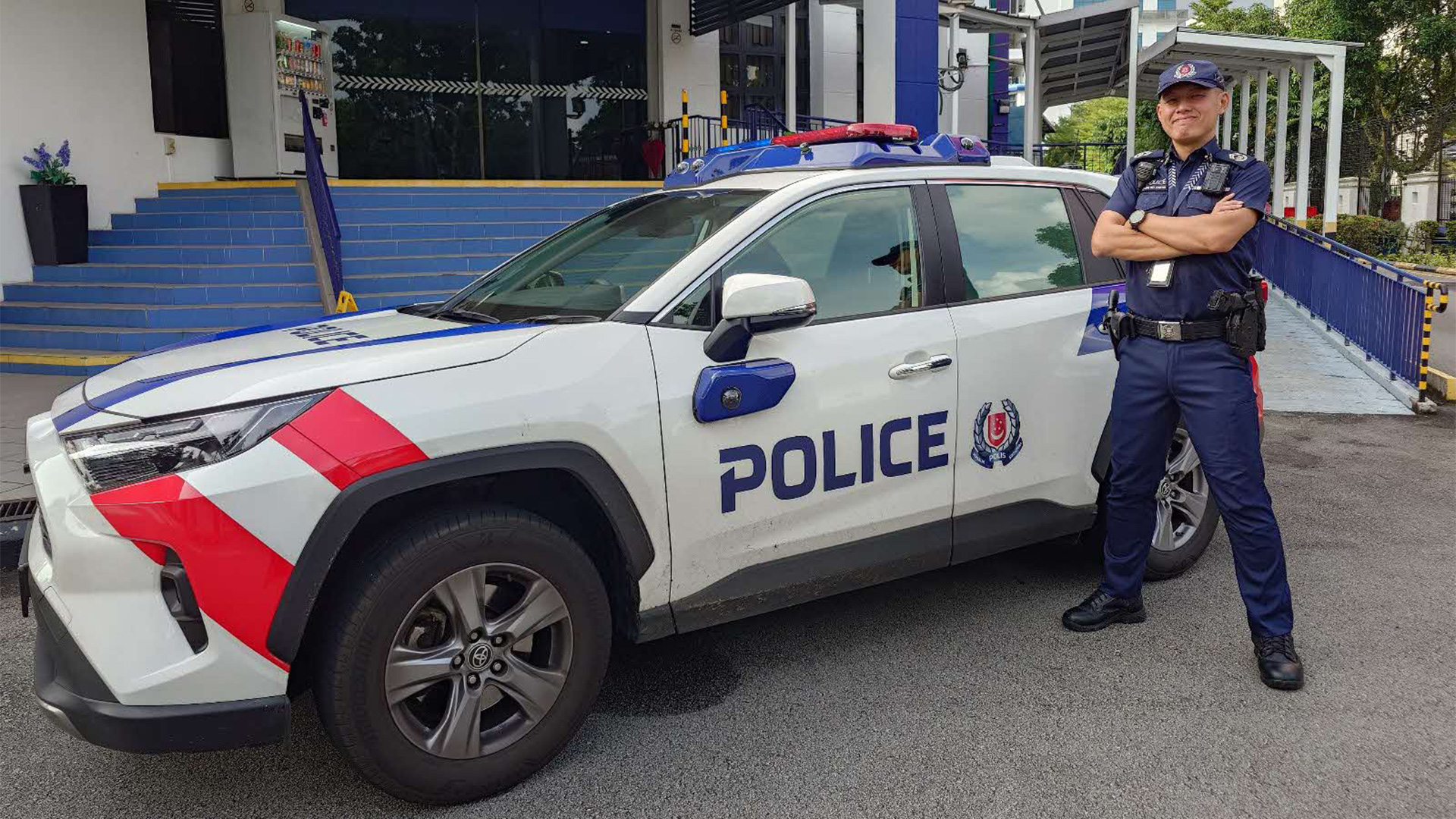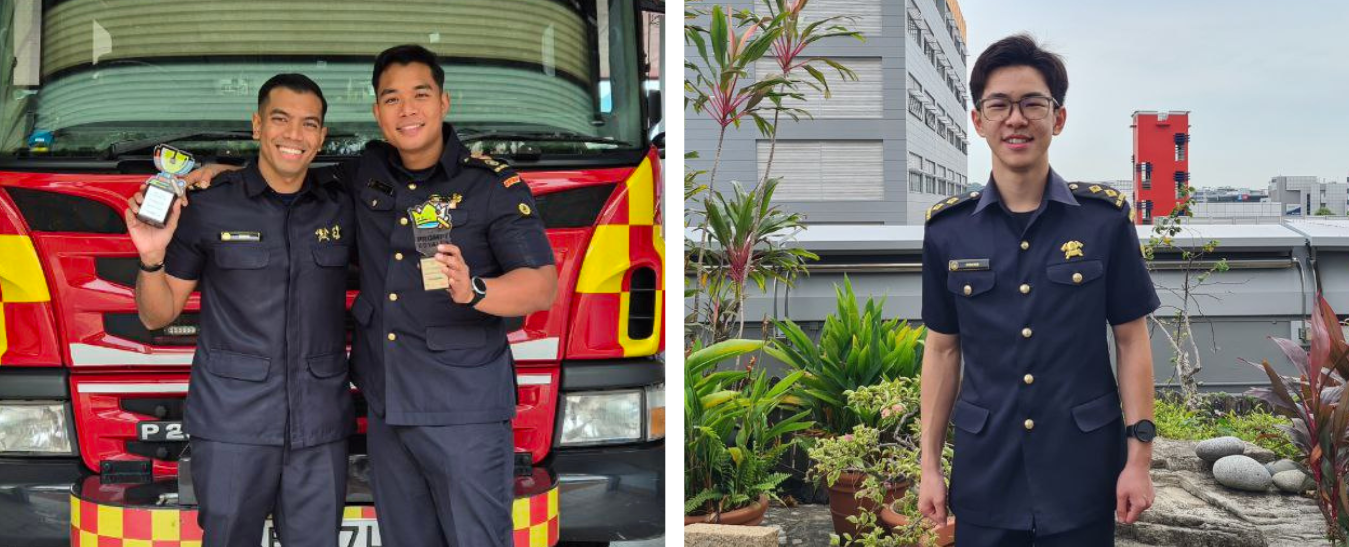Home › In The Force › Where tech meets tomorrow: Charting the frontiers of HTX’s innovations
Home › In The Force › Where tech meets tomorrow: Charting the frontiers of HTX’s innovations
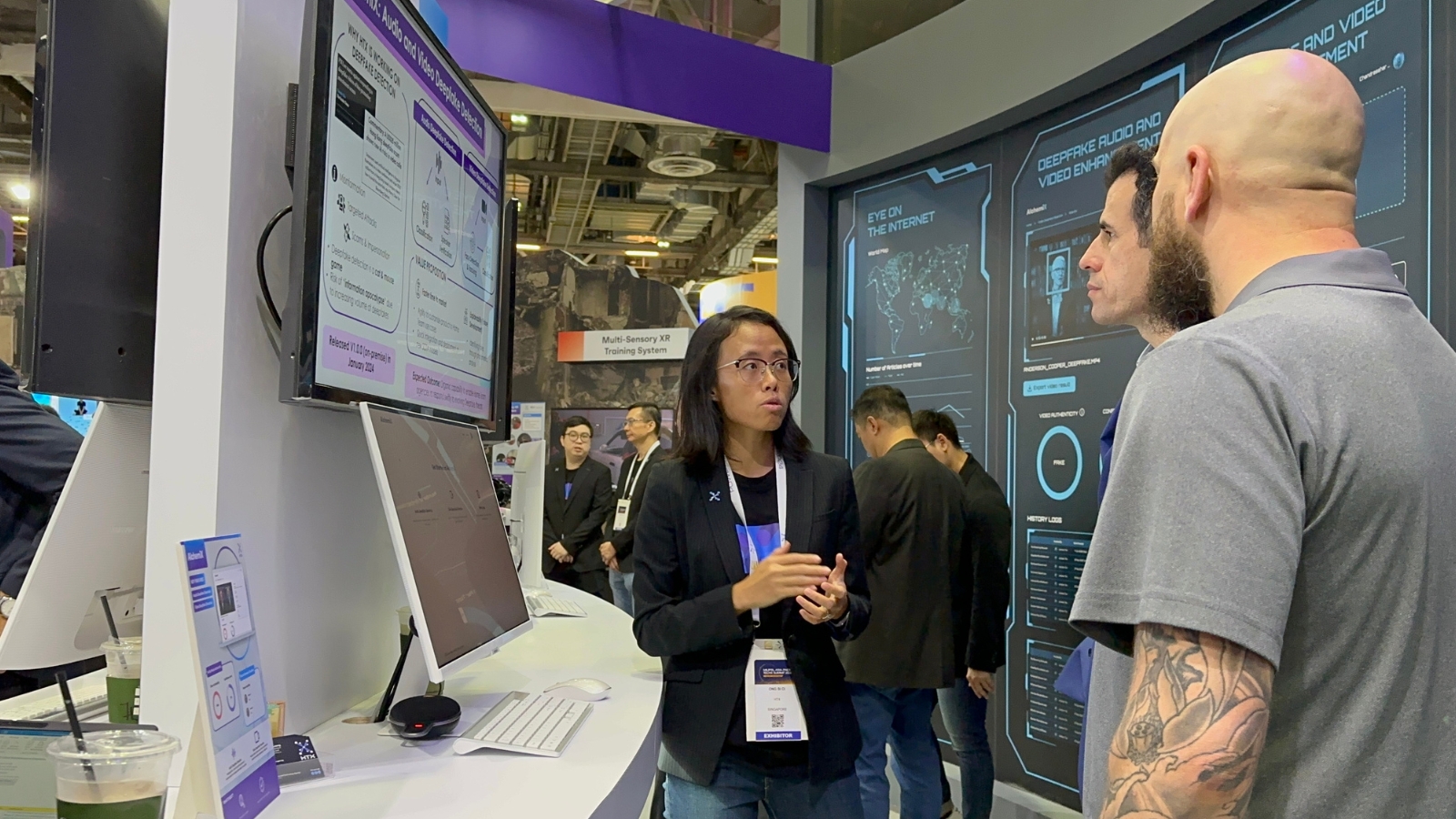
From biometrics to artificial intelligence (AI) and robotics, HTX’s cutting-edge innovations enhance efficiency and help the Home Team solve crimes and save lives.
Soon, going through immigration clearance at Changi Airport without having to break stride will be a reality, thanks to HTX (Home Team Science and Technology Agency). The Identification On The Move (IOTM) concept — conceptualised by HTX’s Biometrics and Profiling Centre of Expertise — aims to transform today’s biometrics-based clearance from a stop-and-go process to a simplified three-step experience: “Walk, Look, Clear.”
Mr Melvin Low, HTX’s Deputy Director, Biometrics, Biometrics & Profiling Centre of Expertise, described the new, seamless process: “You walk through the clearance lane, look at the scanner – which will automatically capture your iris and face and verify your identity – and continue walking through.”
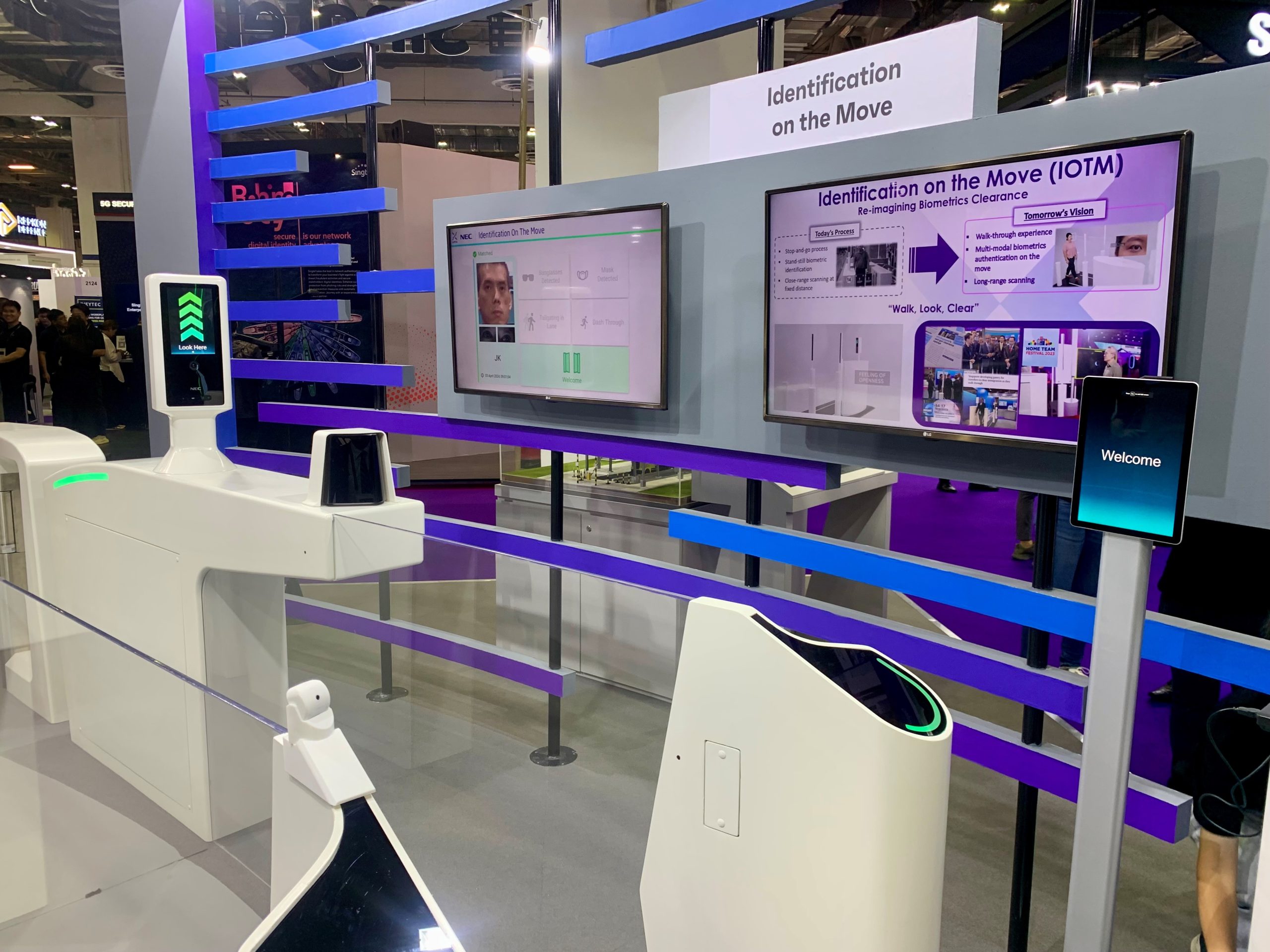
The Identification On The Move (IOTM) technology displayed at the Milipol Asia-Pacific – TechX Summit 2024 (MAP-TXS).
To bring the IOTM to reality, HTX worked with industry partners to develop a technological solution where a person’s iris can be captured as long as they look in the camera’s direction while walking, unlike the current automated clearance system where users must align their gazes at a fixed, close-up distance from the camera.
“When we started the IOTM journey, we were only looking at the use case of immigration clearance for the Immigrations and Checkpoints Authority,” recalled Mr Low. “But as the project evolved, we began to look at expanding the use cases. For example, we could use it at mass events or for secured facilities.”
An openness to exploring the full potential and applications of science and technology is part of HTX’s approach to force multiply the Home Team. Several of its innovations – which are built to secure borders, safeguard public spaces, solve crimes, and save lives – were showcased at the HTX Zone at the inaugural Milipol Asia-Pacific – TechX Summit 2024 (MAP-TXS), which the agency co-organised in April.
The event comprised the TechX Summit, a high-level conference hosting prominent government officials, industry leaders and academia; and the Milipol Asia-Pacific trade exhibition, where cutting-edge advances in homeland security around the world were displayed.
According to HTX Chief Executive Officer Mr Chan Tsan, by bringing the latest science and tech-based solutions together with leading government agencies and industry players, MAP-TXS helps to drive HTX’s collaborations with public and private sector partners and further strengthens the international homeland security ecosystem.
Among the innovations featured at the exhibition’s HTX Zone were AlchemiX, a deepfake audio and video detection tool by HTX’s Sense-making and Surveillance Centre of Expertise; and insect-hybrid robots, by the Robotics, Automation and Unmanned Systems Centre of Expertise in partnership with Nanyang Technological University and Klass Engineering and Solutions.
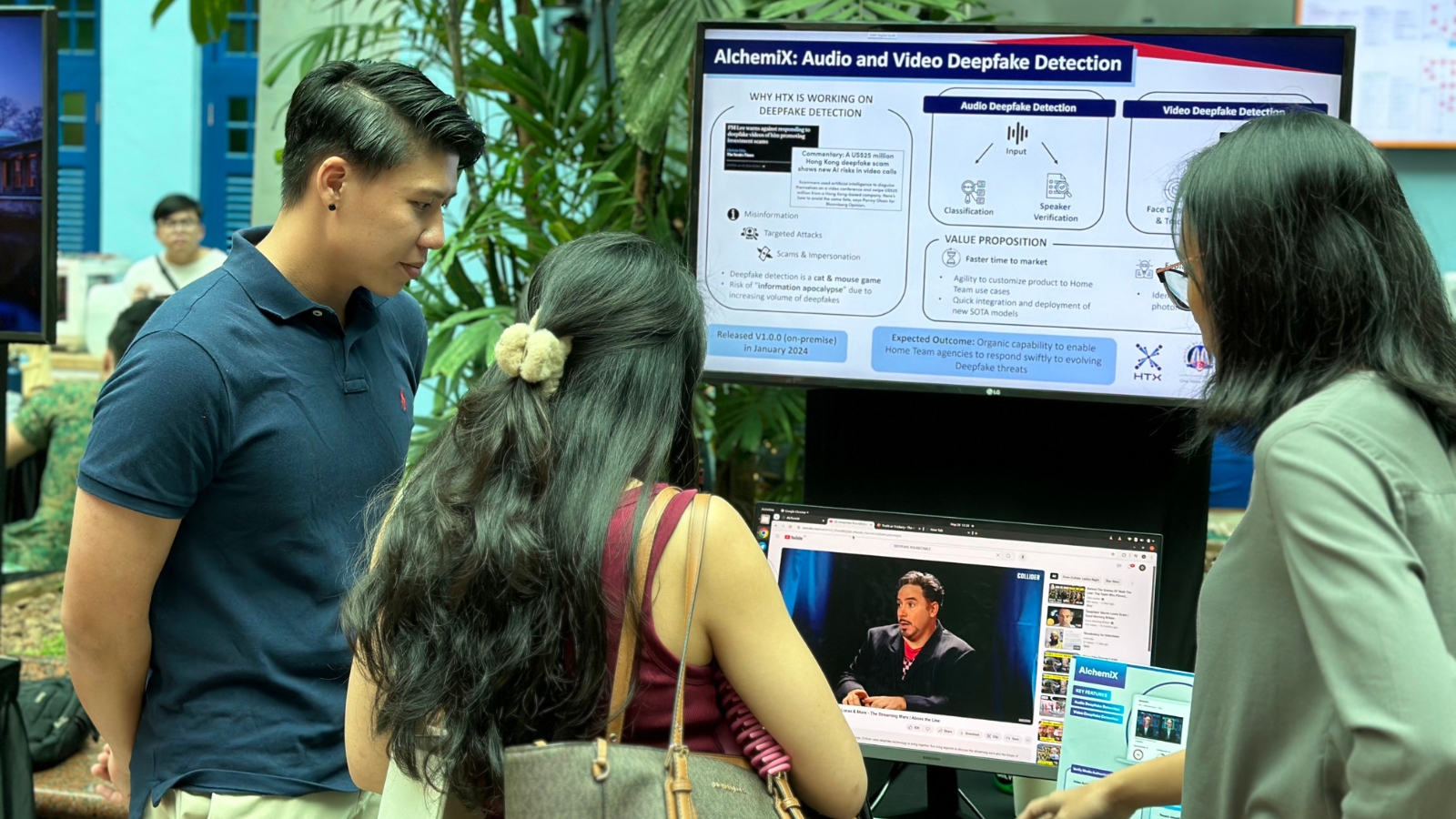
A showcase of the AlchemiX: Audio and Video Deepfake Detection technology.
ALCHEMIX: AN AI TOOL TO HELP SOLVE CRIMES
AlchemiX is a cutting-edge AI tool that enables users to upload media files which are then scrutinised by AI models for signs of being a deepfake. Audio recordings can be compared to a reference file of a speaker’s authentic voice, using algorithms to gauge the level of similarity between the two. AlchemiX is currently being trialled by the Home Team.
INSECT-HYBRID ROBOTS: INNOVATIVE SEARCH AND RESCUE TOOLS
The insect-hybrid robots are an innovative solution to the issue of high energy consumption and limited operational lifespan for miniature robots used in searching for survivors trapped in debris after a building collapses. Search and rescue missions can take hours or days, so live insects — which can navigate tiny spaces and remain active for long periods — are deployed, carrying robotic modules that enable autonomous navigation, human detection, and communication. These insect-hybrid robots will help augment the Home Team’s lifesaving capabilities and protect frontline responders.
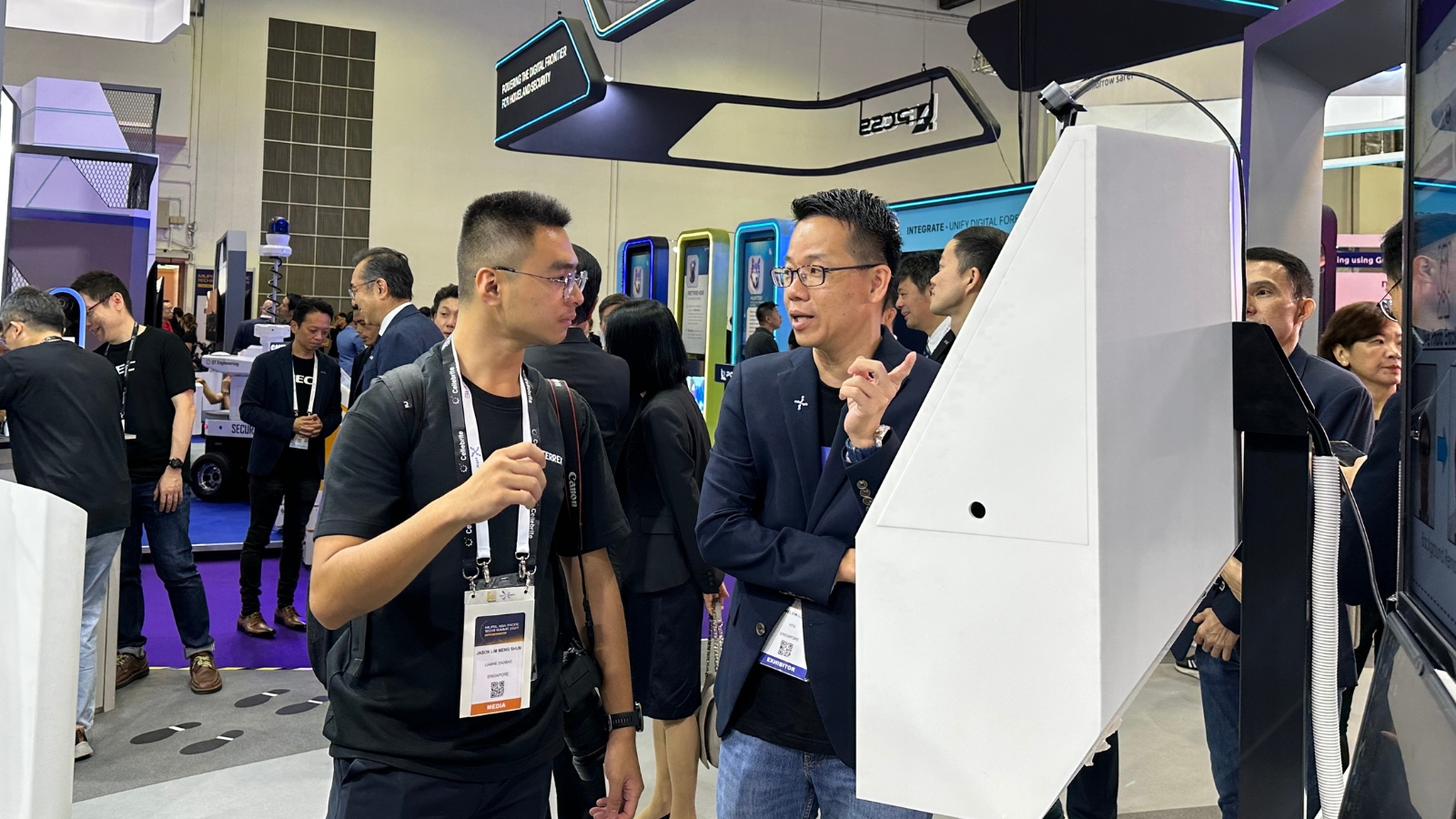
Mr Melvin Low demonstrates the Biometrics Self-Enrolment Kiosk.
Alongside IOTM, another exciting new solution displayed at the summit was the Biometrics Self-Enrolment Kiosk, developed entirely in-house by HTX.
The kiosk aims to enhance the current biometrics enrolment service — which captures a user’s face, iris, and fingerprint — by reducing manual involvement and increasing effectiveness and efficiency. Instead of having trained personnel manually guide a user through the biometric enrolment process, the Biometrics Self-Enrolment Kiosk will allow users to enrol themselves with greater ease.
“This effort is part of our support for ICA in its flagship programme, the Services Centre Next Generation (SCNG),” said Mr Low. “We took a progressive approach to creating the Biometrics Self-Enrolment Kiosk, starting with a mini feasibility study in 2021 to find out if self-enrolment was even possible.”
Heartened by their findings, the biometrics team proceeded to design the automated guided process and build different prototypes of the kiosk. To achieve the ideal balance between a high level of security and users’ convenience, the team decided to integrate AI capabilities into the kiosk.
“Currently, the enrolment process of fingerprint collection is officer-assisted,” explained Mr Low. “At an unmanned kiosk, if the screen asks for your right thumb, how do we know you’re really giving us your right thumb? Or what if you try to use someone else’s hand entirely? We use AI to figure out if you’re providing the correct finger.”
He emphasised that enhancing biometrics technology is not about replacing human officers, who are still superior to technology when it comes to recognising people. Nonetheless, issues like fatigue or heavy repetition can lead to inconsistent results – a problem that technology can help with.
“By augmenting the operations, we hope to increase officers’ productivity and enhance efficiency. Having biometrics helps to achieve a consistent level of performance because it doesn’t get tired. It will also allow us to retrain our existing manpower so that they can work on higher level jobs,” said Mr Low.
There are other benefits as well. Enhanced biometrics can increase accuracy in situations where humans might have difficulty, such as preventing situations where bad actors try to enter a secure space using another person’s passport or identification document.
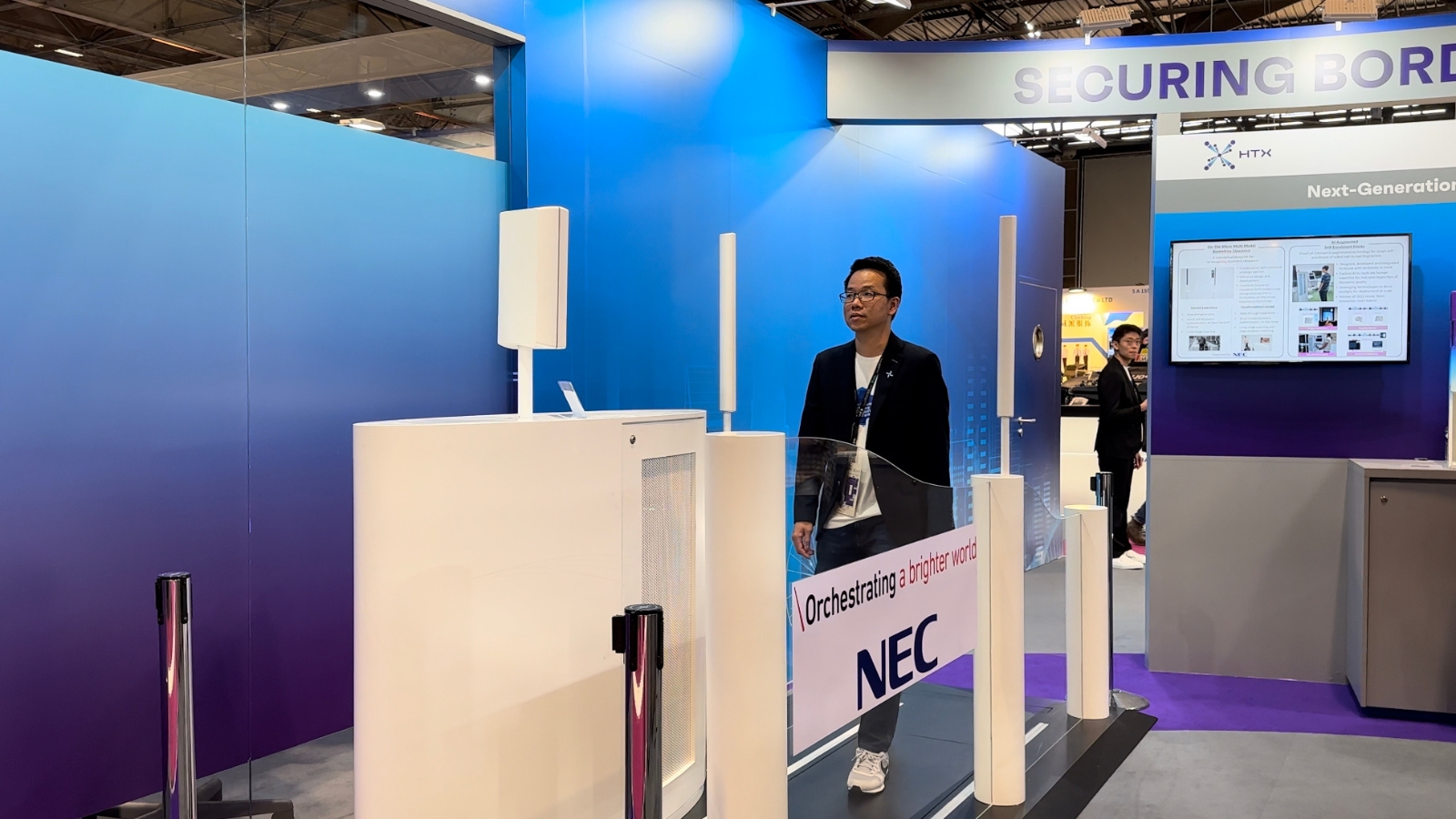
The Identification On The Move (IOTM) technology aims to simplify immigration clearance into a three-step experience: “Walk, Look, Clear.”
While Singapore may be the first country in the world to adopt a passport-free clearance with the help of enhanced biometrics, HTX is continuously exploring potential improvements, said Mr Low. For example, variables like the weather in outdoor deployments or inconsistent indoor lighting can affect the quality of captured images. Thus, it is important to perform site surveys in order to understand the environment and user demographics before the solution is implemented.
Despite these challenges, Mr Low is optimistic about the future of automated biometric clearance. He said: “My personal opinion is that today’s technology is moving so fast with advances like AI and quantum computing that the process of identity clearance can become even more seamless. Being able to capture eyes and faces at the same speed and accuracy as the scanners in the film Minority Report — that’s a long vision that I’d like my team to be able to achieve! For IOTM, we hope to work towards a solution where people can flow freely without having to pass through a lane or gate.”
Reflecting on his journey with HTX, Mr Low said that he enjoyed being able to push the boundaries of technology to make a positive impact: “The Biometrics and Profiling Centre of Expertise is where I can work on real-world solutions that can help to strengthen Home Team operations.”
Like our stories? Subscribe to our Frontline Digital newsletters now! Simply download the HomeTeamNS Mobile App and update your communication preference to ‘Receive Digital Frontline Magazine’, through the App Settings.


